















05
KING’S ROWING: A LOOK INSIDE THE ULTIMATE TEST OF MIND, BODY, AND SPIRIT

15 A DREAM CHESS MATCH: EINSTEIN V OPPENHEIMER

16 EXPLORING THE UNEXPECTED RISE OF CHESS

11
CHARTING A NEW COURSE: EXPLORING PARALLEL
EDUCATION AS A THIRD MODEL AMIDST THE SINGLE-SEX VS CO-ED DEBATE

20

FALL FROM GRACE: TRACKING THE RISE AND FALL OF THE WALLABIES AND THE IMPORTANCE OF TEAM COHESION

24 CO-CURRICULAR OPPORTUNITIES AT KING’S FOR PERSONAL DEVELOPMENT AND FRIENDSHIP BEYOND THE CLASSROOM
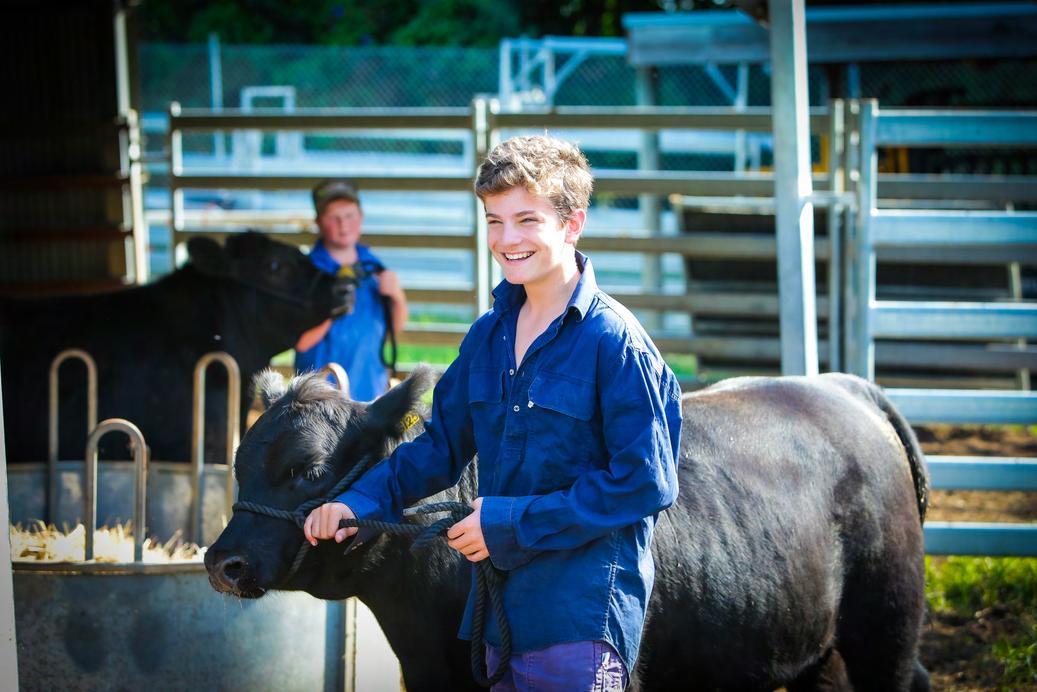
28
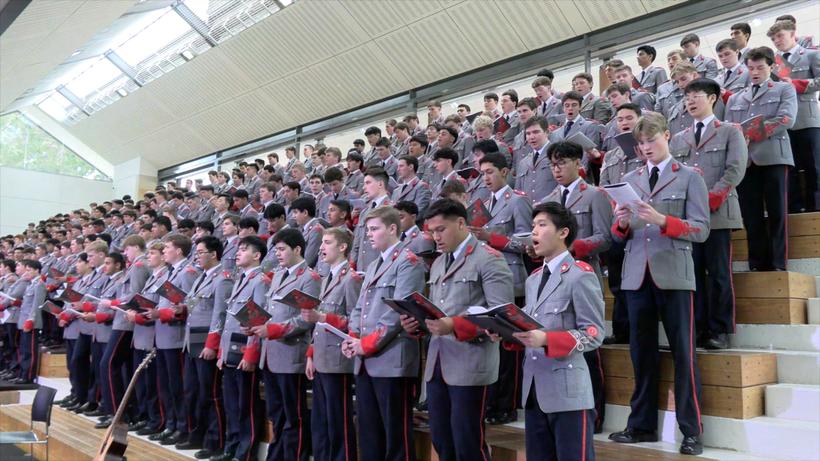
KING’S HSC ‘HEIST’: NAVIGATING SUCCESS, VALUES, AND OPPORTUNITIES BEYOND HSC RANKINGS
Editor In Chief
Ethan Zhu
Creative Director
Tully Salmon
Senior Editor
Jonathan Pan
Photographer
Peter Wang
Editing Team
Dinil Amarasinghe
Ian Gao
Daniel Payne
Cameron Schultz
Prash Sivagangabalan
Johnson Tang




Rowing is a seemingly simple sport. From the outside, it seems like a bunchofweirdosgettingtogetherto pull on a stick for a while — and that’snotentirelywrong.Whileitcan be monotonous and repetitive, achieving that perfect balance after all the hard work is incredibly rewarding. The boat will sit flat and cutthroughthewatereffortlessly.
A boat that moves well is a great achievement. It’s a combination of four to eight boys committed to a single cause. Moving at the exact same time up the slide, putting the oar in the water at the same time, and having the trust that everyone around you will pull just as hard as you are. Despite common perceptionsthatrowingis‘hard’and fulloftoughearlymornings,it’svery
easy,inthesensethatanyoneofany build and any natural sporting prowesscanbecomea1stVIIIrower through hard work and mental toughness. And while it isn’t always thrilling, it’s a sport that brings you closetoyourcrewmatesandteaches you lessons of perseverance and determination that you simply can’t getfromothersports.
Us rowers race a distance of 2000 metres. It’s flat out, but not quite a sprint. By the end of the race, your legs will feel like they are about to explode, and that’s when you know you’reperfectlyonthelimit.
It’s why many call rowing the most demandingOlympicsport.
Thisyear,buildingofftheworkdone inpastyears,westartedstrongwith a capable squad and many enthusiastic boys throughout the program.InlateTerm3,theboysgot into the swing of things, getting back onto the water and getting a feelforthesportagain.Immediately, the potential was evident, and this gave us the motivation and confidencetotraintowin.
Come Term 4, we kicked off the racing season. The 1st VIII had an extremely strong start, kicking off theseasonwithawin.Butrowingis asportwhereyougiveiteverything, every single race, and Mack Mason unfortunatelyendedupinamedical tent, forcing us to scratch the secondrace.The2ndVIIIcame2nd inbothracestoanextremelystrong Riverview crew. The IVs all showed promise, with the 1st IV coming a solid 2nd and the 2nd IV coming through in 4th. But the strength of King’s Rowing has always been the program that enables the boys to growanddevelopimmensely
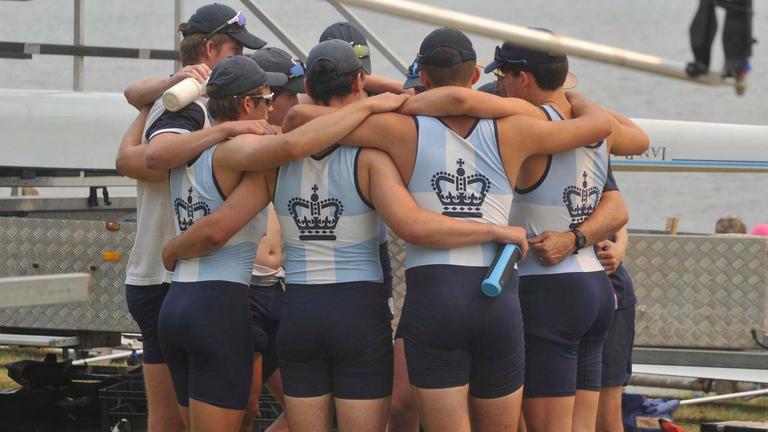
throughout the season. Our trust and commitment to ‘the process’ are what enable us to improve and continuously shock other schools with unexpected results. So, after the end of Term 4, we started December camp, with lots of boys chipping in through singles, pairs, and doubles work. Coming out of December camp and into the holidays, the boys were sent away with a detailed training program to build fitness and high expectations forthelikesofOscarandLouisTodd orHugoFirthandStirlingHeriot.

Coming into the new year, the top few crews had a camp out of the SydneyUniboatshedrowinginthe singles in preparation for the important sculling camp where crewsareselectedfortherestofthe season and, ultimately, the Head of theRiver.
With the crews selected, the boys went into the Summer ‘big boats’ camp, ready to go and make the mostoftheweekoutattheNepean River.Needlesstosay,therewasalot of rowing, and we finished the holidays feeling quicker and stronger than ever. We were ready forthefinalstretch.

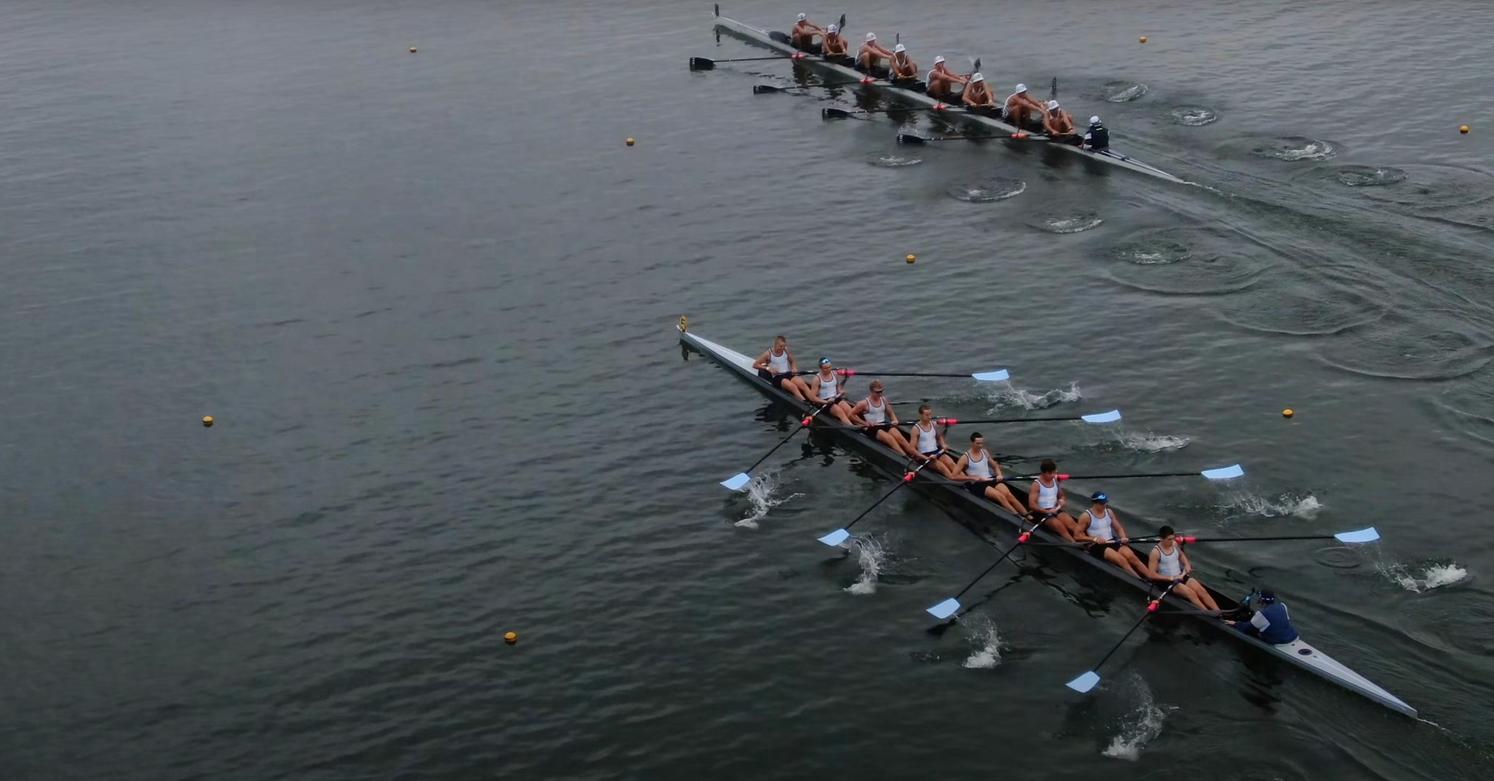
Our home regatta was the Kings/PLC regatta, but just a few daysbeforetherace,our1stVIIIwas struck by injury and was forced to scratch. The 2nd VIII had a heroic day,withaclose2ndtoRiverviewin thefirstraceandthen,inastunning
feat of resilience, achieved an outstandingwininthesecondrace, beatingtheScotsandNewington1st VIIIs. The IVs also had a strong regatta.The1stIV,2ndIVand3rdIV all came through with strong 3rd places, and the 4th IV had a tough dayintheoffice,comingin4th.
State Champs was an eventful weekend for the shed, with the 1st VIII, unfortunately, scratching with some persisting back issues. However, those who were fit and healthy were still racing. The remaining1stVIIIthenhoppedinan IV together to come 2nd in the under-19IV,andWillRogerswonin thescullforboththeschoolboyand U19 divisions. The 2nd VIII had a toughweekendracingintheunder19VIII,havingthetoughestheatand comingthroughinaveryquick5th, alsobeatingoutmany1stVIIIcrews. The IVs also had a tough weekend racing in the Schoolboy IV, with none making it through to a very toughfinal.

Gold Cup was a great race for everyoneintheKing'sshed,withthe juniors being able to race at the same regatta as the seniors and being able to experience what it is like to row at these bigger regattas, preparing them for the future. I’m sure all the boys had a great Gold Cup,withmanywinsthroughoutthe regattaandanoutstandingdayfrom theboatshedoverall.
TheshedisreadyfortheHeadofthe River, knowing that we have genuinely put our all into every session. We have the confidence in eachothertoknowthateveryoneof uswilldigasdeepaspossibleinan attempttowinfortheschool.
It all comes down to 2000 metres on Saturday, the 16th of March. And as the Cox calls “red buoys”, indicating we have reached the last 100 metres of the race, it is your cries of support that will get uspasttheline.
Seat 1 (bow seat) - is where Mack Masonsits.Itisgenerallyreservedfor very technical rowers who have the ability to move the boat well. They can’tbetooheavy,ortheywillcause theboattosinkfromthefront.Mack isagile,uncoordinated,andpullshis heartoutinthebowseatoftheboat, often spewing on the podium once finished.


2 seat - is typically lighter and shorter than other rowers but has the dynamism to pick up the boat whereit'slighterintheskinnyendof theboat.WillFarrah’slackofheight makes him a good fit. But make no mistake, he is definitely powerful enoughtoyamontheoarandmove itwell.
3 seat - has a reputation of being where the least skilled rower is isolated in the boat, with only absolute mongrel to make up for it. Campbell Wickham is an exception to this rule, his lanky build enabling him to move silkily, providing great length and consistent long watts to propeltheboatalong.
4 seat -iscommonlyforthebiggest unit in the boat. Charlie Baker (vice COB), who has a weirdly long torso, sits in the 4 seat of the VIII this season.Heclaimsthatherowswith the longest stroke in the boat and apparently passes down a beautiful rhythmtothosebehindhim.
5 seat -isreservedforabigunit.In the middle of the boat, they have the most weight on their oar and require big length and big power regardless, with technique being less important. And, oh boy, Sam Hines is a unit. The big fella really swings his body back on the oar, picking up the heavy weight of the boatandgivingitsomebigsend.
6 seat - is also reserved for a big strong boy: the powerhouse of the boat. The 6-seat is integral in transferring the rhythm down the boat set by the stern two and also requiressomebigwattstomanage to pull the weight on the oar. Alfie McLean is just that guy for the job, he’s a big boy with Yale coming to recruithim.Healsohasthesecondhighest watts in the boat, which forgives his interesting rhythm and questionablecatches.

The 7 seat is for a smaller, rhythmical rower who can consistentlypullandstayinabsolute perfect timing with the stroke seat. Tom Whalan does just this, putting down relentless watts that outdo thepower-to-weightratioofanyone in the boat. He only occasionally missesabigpartofhisjob:getting thebladeintimewithStroke.
The stroke seat is the rhythmic weapon of the boat, with a silky smooth rhythm and relentless power that drives the boat's driveto-recovery ratio with its fearless strokerate.
Will Rogers (COB) (Beast) (Legend) can do all of this — his top watts in theboatandrhythmlearntfromthe questionable personalities at Sydney Rowing Club during rugby season allows him to be the best rower in theboatbyamile,sendingtheboat along with his 512 watts (almost Olympic level) average, killing the restofthecrewwithhispeakfitness that everyone else tries (but seldom succeeds)tomatch.
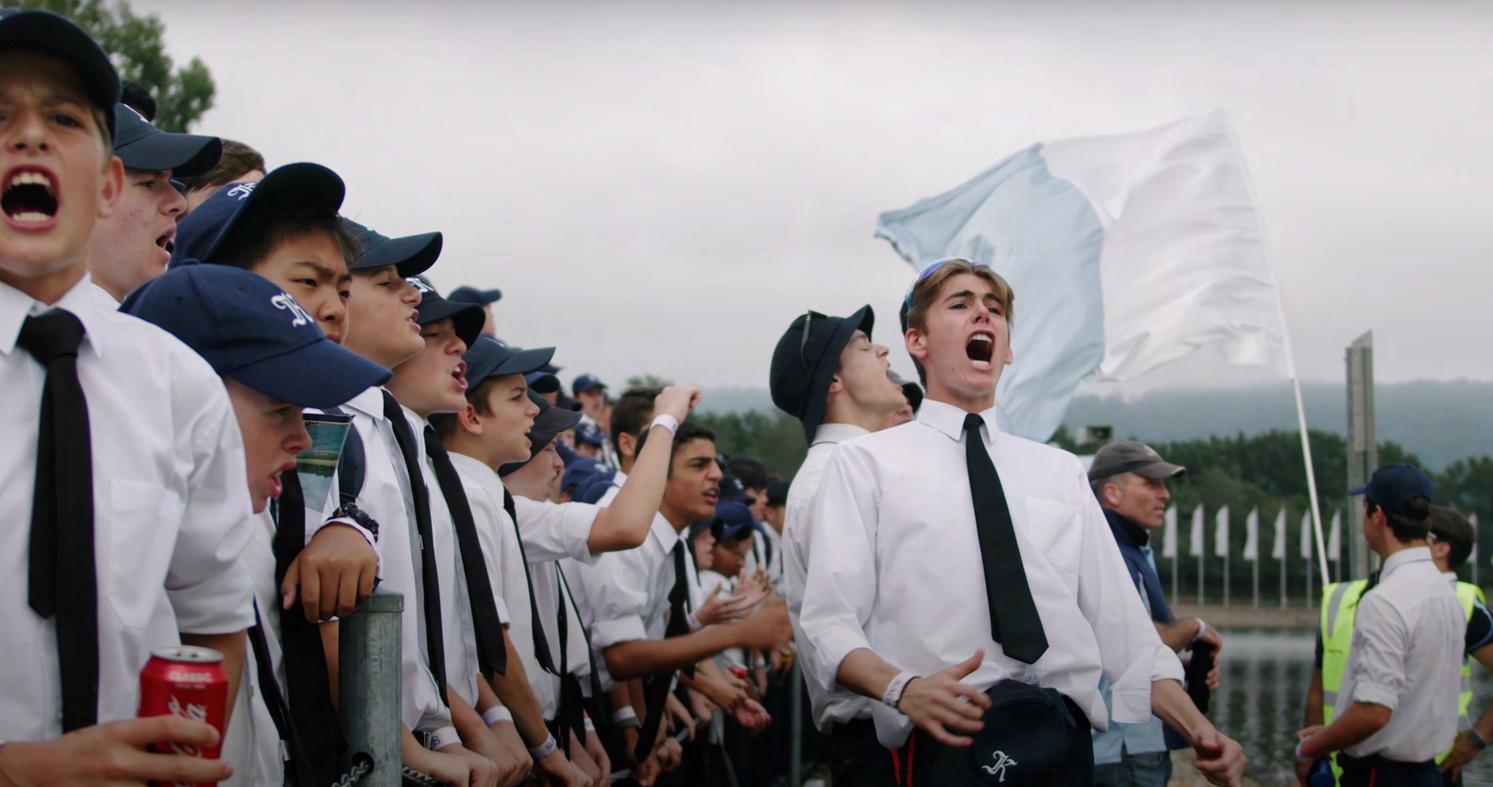

In late November 2023, Newington College,aschoolthatpridesitselfin its160-year-longhistoryofsingle-sex education, announced plans for the school to transition into a coeducational learning space. This has beenanotablycontroversialchange, inspiring widespread protest and debate.
However, they are not alone. Other all-boys schools in Sydney transitioning to co-ed include Cranbrook, St Mary’s Cathedral College, Marist Catholic College North Shore and Corpus Christi CollegeMaroubra.Single-sexschools have also amalgamated with one another to form co-ed learning environments, such is the case with the newly formed St Vincent’s CollegeinAshfield.
Besides high schools, St Paul’s College, a residential college within the University of Sydney, opened its doorstowomenforthefirsttimein itsnearly170-yearhistorylastyear.
Interestingly, in recent years, there have been no Sydney girls' schools that have gone co-ed without amalgamating with an adjacent allboys school. The most recent example of a girl's school transitioning into co-ed was Mater Maria Catholic College in 1979. The only other two examples are Arden AnglicanSchoolandRedlands,going co-edin1976and1978,respectively.
The departure from all-boys education in recent years reflects Sydneyparents’increasingdemand
for mixed-gender education for theirsonsandsingle-sexschoolsfor theirdaughters.
Infact,accordingtoAGSA(Alliance of Girls’ Schools Australasia), a staggering 96% of girls’ schools across NSW increased demand for places in 2023, with 17% of the schools surveyed already being at full enrolment with no capacity to expand. According to a South Australian survey of parents and educators, 94% found all-girls schools an attractive option due to increasedacademicperformancein comparison to co-ed counterparts, with 92% seeing greater STEM (Science, Technology, Engineering, Maths) participation and an increased78% participationratein sport.
As for all-boys schools, in recent years, they have gained a reputation as“hotbedsoftoxic
masculinityandrampantmisogyny”, withmanychampioningthevalueof co-ed learning environments to accelerate the social education of bothboysandgirls.
In Parramatta, government co-ed schools are limited to the option between Arthur Phillip High School and Parramatta High School, yet boysconstitutethemajorityatboth. Nearly two-thirds of Arthur Phillip HS students are male, while at ParramattaHS,malesmakeup59% of the student demographic. Statistically,parentsarelessinclined to send their daughters to a co-ed school that is a de-facto boys’ school, so they will demand a truly co-ed option. This is where most problemsarise.
Newschoolsareexpensive,andany localgirl’sschoolwillrejectanyidea of merging, such is the case with RandwickGirlsHighSchool.

Additionally, turning a boys’ school into a mixed-gender environment would only create another maleskewed learning space. A prime example of this is Barker College in Hornsby. Despite the college announcingthatithadbecomefully co-educational in 2022, 62% of its students are male, and nearly 700 moreboysthangirlsarefemale.
Apotentialalternativethatcouldsee the best of both worlds is parallel education – combining single-sex andco-edclassesononecampus.
There is no set model for parallel education, with all four schools in Australia that implement it having differing systems from one another but ultimately sharing the core principlesofamixed-gendercampus withsingle-sexclasses.
The four schools that implement paralleleducationare:
ClayfieldCollege,Brisbane,QLD Haileybury,Melbourne,VIC
PittwaterHouse,Sydney,NSW TinternGrammar,Melbourne,VIC
There is significant variation in the way parallel education is implemented. Schools such as Clayfield College begin with co-ed primary education, moving into a single-sexmodelforYears7-9before gradually transitioning to full co-ed classes.
However, rather than having co-ed classes in the final years of high school, Haileybury has single-sex classes after early primary school. Haileybury is notable in the sense that it is the largest school in Australia,with4689studentsin2023. Forcontext,King’sandTudorHouse combined have a total of 2137 studentsin2023.
IntheUK,theyhaveasimilarmodel toparalleleducationcalledthe

Diamond Model, where boys and girls are taught together until the age of 11 before separating into single-sex classes until they are 16. Co-edclassesreturninthefinaltwo yearsofschooling.
Of course, schools make decisions about co-ed and single-sex education to help accommodate their population and class sizes. However, proponents of this model alsoarguethatitcombinesthebest ofbothworlds:allowingforgenders tolearntogetherforsomesubjects, depending on different rates of development.
Thisistheobviousandkeybenefitof the parallel education model: the access to gender-tailored teaching, which challenges the traditional one-size-fits-all approach by capitalising on the recognised differences in learning styles between genders. While acknowledging that the differing rates of physical, emotional, and psychological development betweenboysandgirlscanhavean impact on their learning styles, it simultaneously understands that socialinteractionsbetweengenders are essential in developing welladjustedyoungmenandwomen.
Yet, despite living in an era where there is greater acceptance and understanding of gender fluidity, students who identify as transgender and non-binary may feelmarginalisedoruncomfortable
inasystementrenchedintraditional genderbinaries.
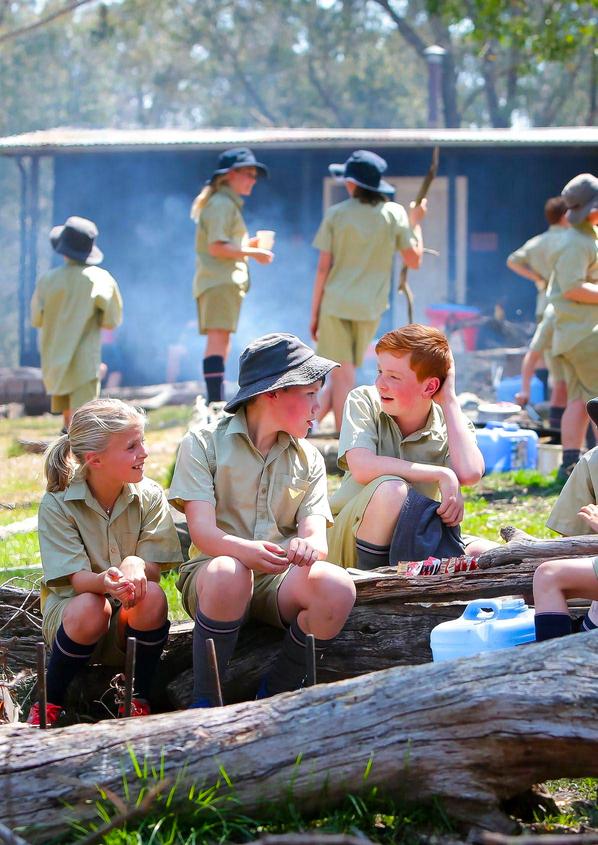
Whilethedebateofsingle-sexversus co-ed rages on, perhaps parallel schoolsshouldnowbeincludedasa separate and third model. This third model is able to provide both a single-sex and co-educational learning space, which appears to support the advantages of both single-sex and co-educational schools whilst diminishing the disadvantages.
Perhaps our friends in Stanmore couldimplementthismodelasthey transitiontoCo-ed.
What are your thoughts on parallel education?

Thereexists,intheworldofchess,a record of a legendary chess clash between two of the greatest scientificmindsinhistory:renowned Physicist Albert Einstein and the father of the atomic bomb, Robert Oppenheimer.
This epic showdown took place at PrincetonUniversityin1933.Einstein played White and opened with pawn to E4. Oppenheimer countered with a pawn to E5. Adopting the Ruy Lopez opening, Einstein played Knight to F3, followedbyBishoptoB5.
Oppenheimer’s response was to adopt the Morphy defence, playing A6, in an attempt to push back Einstein’s Bishop. Einstein's aggressive play kept Oppenheimer onthedefensiveandbehindin
Thematch:
White:Einstein,Black:Oppenheimer
tempo. Einstein continued to develop his pieces and castled on move number 6. Oppenheimer’s development lagged considerably as he was forced to play under pressure. Move 15 saw Einstein pin Oppenheimer’s Queen and Knight inamovethatmadeOppenheimer uttertheimmortalline,‘Nicemove Einstein!’ Soon after this, Einstein captured Oppenheimer's Queen, houting, ‘Boom’ as he played the move.Thiswasanobviouspieceof atomicbombtrashtalkonthepart of Einstein. Following this, Einstein moved in for the kill, resulting in a mateafter24moves!
In the end, the Theory of Relativity triumphed over the Manhattan Project. Oppenheimer’s flare and abstractivity proved no match for Einstein’sruthlessness.
1.e4e52.Nf3Nc63.Bb5a64.Ba4b55.Bb3Nf66.OONxe4
7.Re1 d5 8.a4 b4 9.d3 Nc5 10.Nxe5 Ne7 11.Qf3f6 12.Qh5+ g613.Nxg6hxg614.Qxh8Nxb315.cxb3Qd616.Bh6Kd7 17.Bxf8Bb718.Qg7Re819.Nd2c520.Rad1a521.Nc4dxc4 22.dxc4Qxd123.Rxd1+Kc824.Bxe7Blackresigns.

I was six when I entered my first chess tournament. After two weeks of lessons from my father, I barely knew how the pieces moved or what they were called. So there I was, entering a dilapidated alley in Parramatta,ascendingfourflightsof stairs,andfindingmyselfinadusty, brick-walled room. I trembled in anticipation at the sight of the discoloured pieces and canvas chessboards, eager to prove myself inanintellectualbrawl.
My dad took me home less than fifteen minutes later, having been informed that I was the only child whohadshownup.
This continued to be a consistent theme for much of my early chess career. My primary school was unable to hold a weekly chess club due to a lack of participation. It meant I had to take private lessons insteadofgrouplessonsduetonot beingabletofindotherkidstohave
grouplessonswith.Eventhelargest of tournaments I attended failed to fieldeventwentyparticipants.Itwas a sobering reality for a young me, whofoundoutthehardwaythatthe majorityofchildrenmyagepreferred spending their weekends on soccer fields and basketball courts rather than being sat in a dingy room moving around plastic pieces for hoursonend.
Therefore,youcanprobablyimagine howshockedIwaswhentheCOVID19 lockdown spurred an unprecedented explosion in the popularityofchess.Whilethetennis courts and rugby fields were shut under strict restrictions, many stuck at home turned to chess to resist their imminent boredom, with the most popular online chess site, chess.com, gaining fifty million membersbetween2019and2021.
But of all the games or activities to choosefrom,whychess?Whywould agenerationthatcravesstimulation and lacks patience forgo its usual modes of entertainment in video games,socialmedia,andstreaming servicesinfavourofastereotypically dullandunexcitingboardgame?
Well, one of the main contributing factors to chess’ meteoric rise in popularity is undoubtedly “The Queen’s Gambit”. A series that I’m suremanyofyouhavewatchedand most of you have heard of. Its empowering plot aimed at dismantling the stereotypes of a traditional chess player and encouragingmorewomentoplayin themale-dominatedsportallowedit to become the third most-watched TVseriesin2020.AccordingtoCNN, inthethreeweeksthatfollowedthe release of the highly-acclaimed show,ordersofchesssetsincreased by 87% while sales for chess books rose an eye-watering 603%, a testamenttotheimmenseinfluence that “The Queen’s Gambit” had on theextraordinaryriseofchess.

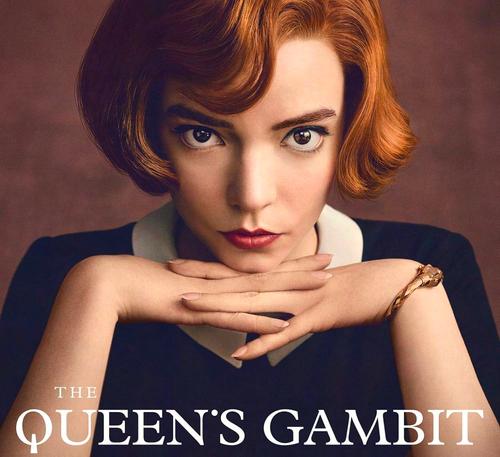
Perhapssocialmediaalsohadarole to play. To be more specific, platforms such as Twitch and YouTube proved to be the largest catalysts involved in the growth of theprolificboardgame.Itallstarted when xQc, a controversial Twitch streamer with almost 12 million followers, was coached for a day by super grandmaster Hikaru Nakamura. This spurred a trend where popular Twitch streamers such as Tyler1 and moistcr1tikal would be instructed by top players, culminatinginanonlinetournament hosted by chess.com and streamer Ludwig in which icons such as Mr Beast, Logic and Daniel Negreanu took part. Youtubers such as Levy Rozman and Eric Rosen capitalised off the plethora of beginner and intermediate players watching streamers play in events such as Pogchamps, creating video lessons inwhichtheyexploredopening
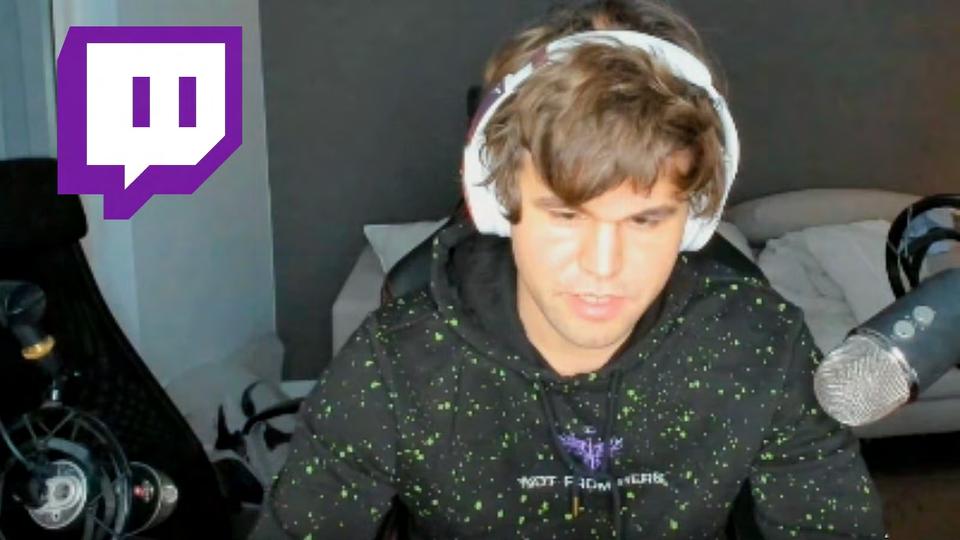
and endgame theory, as well as analysinggames,gainingmillionsof subscribersintheprocess.Eventhe former world chess champion (and, in my opinion, the chess GOAT) Magnus Carlsen began streaming. His bizarre streams, where he often crushes other top players despite being quite drunk, have garnered thousandsofviewers.
However, the unprecedented growth in chess has affected not only the size of the game’s player base but its landscape as well. Beforeitsrapidpopularisation,chess was defined by its classical format, the lengthy time controls allowing for accurate and complex moves to be made over the board, with top games being played almost to perfection. Nowadays, however, perhapsasaresultofthemajorityof its players consisting of dopamineseekinggamers,theenvironmentof chess has shifted away from longer time controls and instead towards 'bulletandblitz'.Afterall,whyspend anhourplayingonegamewhenyou couldplayten?
However, I want to draw your attention to the true beauty of chess. As I've researched and cultivated this piece, it's only affirmed my view that chess is a magnificentgame.It'snotwhenyou executeacrushingattackordeliver a stunning checkmate. It’s not its status as a game where purely intellectual ability is tested. It’s not playingwithyourfriends,ortheway the knight moves, or any other of thesetrivialthings.
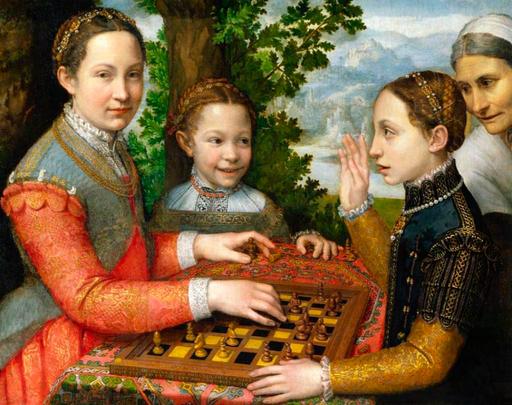
It’stheenduringabilityofthegame to change, expand, and evolve over time.
It's how a game more than 1500 years old, under the influence of its perpetually shifting environment, has continued to flourish and transform after all these years. Even in the comparably insignificant period of 10 years for which I have played, chess has undergone tremendous change, its metamorphosis unparalleled by any other game or sport in such a short time frame. Even recently, the formerly named 'Chess960' and newly dubbed 'Freestyle Chess' found immense popularity, attracting the majority of top grandmasters and a massive following. Whenever I think I’ve experiencedallthatchesshasto
offer, a new format, a new time control, or some radical evolution is popularised, and I find myself once again engrossed in the archaic game. After more than 10 years of playing chess, I can wholeheartedly saythatit'sbeenagiftthathaskept ongiving.
Forthoseofyouwhoalreadyplaythe game, keep playing. Keep battling against your friends, keep finding tacticsonchess.comandlichess.org, and keep exploring the countless experiencesthatchesshastooffer.
Andforthoseofyouwhohaven’tyet discovered chess, I hope that my articlehasinspiredyoutogiveitago. Why not pick up the game? Chess has given me so much enjoyment and fulfilment, and it could do the sameforyou.

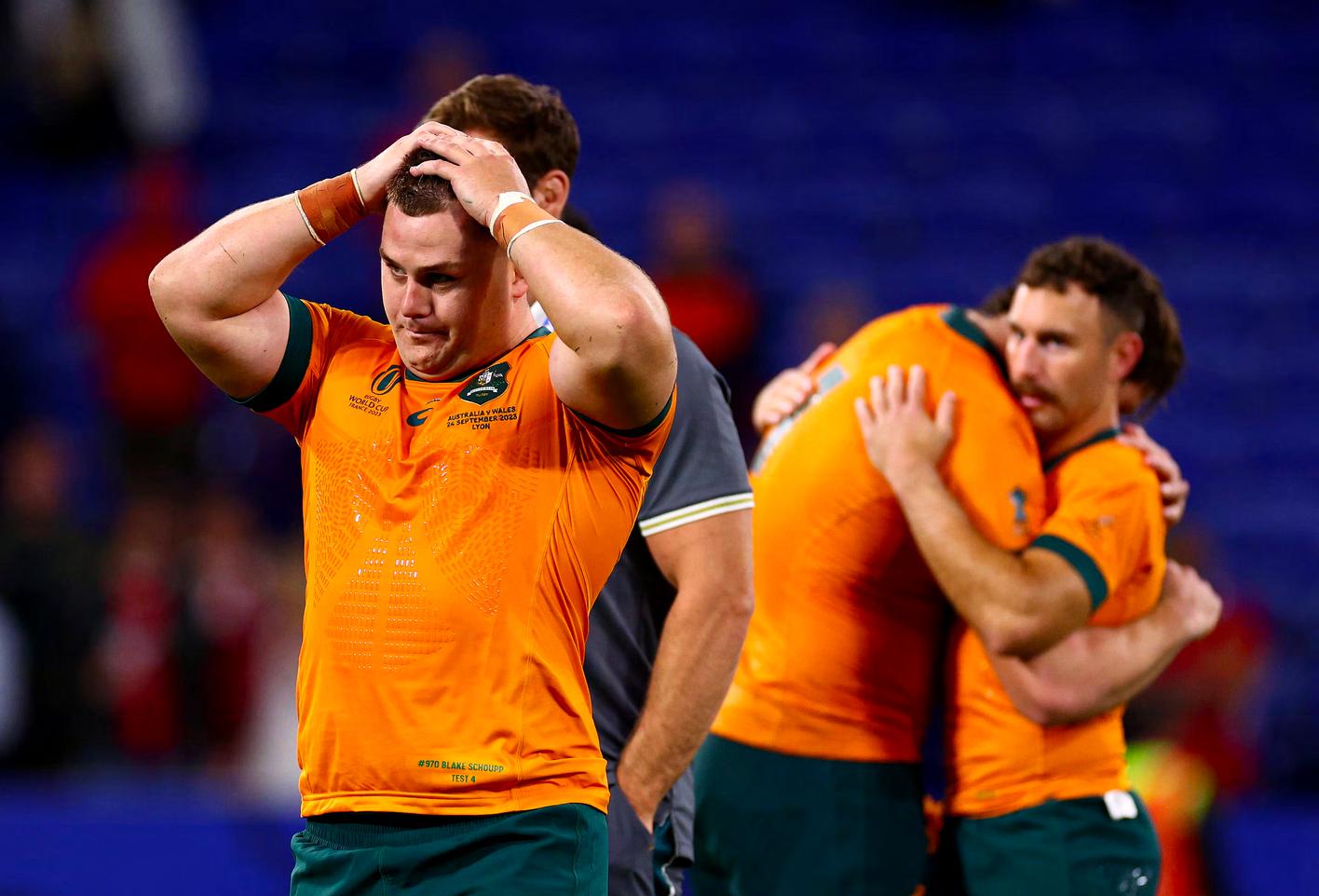
Since the game of rugby began, international teams have primarily been made up of players selected fromlocalandregionalclubs,except for three countries: New Zealand, South Africa, and Australia. Players wereselectedfromprovincialteams abovetheclubsystem,andtheNew ZealandandSouthAfricanprovinces wouldplayregularseasons,helping the All Blacks and Springboks to remain as dominant Rugby forces formostofthe20thcentury.
In Australia, the Wallabies were historically comprised of players from two main states: New South Wales and Queensland. From 1970 on,Queenslandextendeditsplaying seasons,reachingupto21gamesin some years, surpassing any club or provinceglobally.
Thisshiftledtoincreasedvictoriesfor Queensland against the historically dominant New South Wales. The flow-on effect in the 1980s was that the Wallabies were comprised of Queensland and New South Wales players who had increased shared experiencetogetherattheprovincial level. By selecting players from only two teams, the Wallabies had a higher level of cohesion than the BritishhomenationsandeventheAll Blacks. This was illustrated by the 1986 Wallabies team that won the BledisloeCupinNewZealandforthe first time in 37 years. The Wallabies had nine players from New South Wales and six from Queensland. In comparison, the All Blacks had playersfromninedifferentprovinces. In1991,whenAustraliawontheirfirst WorldCup,theWallabiesteamhada combinedtotalof366startingcaps
for Australia; however, their opponentsinthefinal,England,had greater experience with 449. However,beforetheWorldCup,the New South Wales and Queensland sides had played a total of 24 trial games. In this case, the Wallabies' greater level of cohesion and practice gave them an advantage overamoreexperiencedopponent.
Nationalrugbyteamsbuildcohesion through three main approaches: long-term repetition of selection, extreme consistency before a competition, and high levels of cohesion in the feeder and grassroots teams. Long-term repetition, exemplified by England's 2003WorldCup-winningteamwith 610 starting caps, showcases the benefits of consistent squad selectionoverfourtofiveyears.
Extreme consistency before a competition was displayed by the 2019SouthAfricanside,witha79.6% consistencyinthetwoyearsleading to their World Cup victory, which surpassedAustralia's70.9%,adecline from 1999's 83.6%. Lastly, cohesion can be fostered by high levels of lowercohesioninprovincialandclub teams, as seen in the support the 1999 Wallabies received from the ACT Brumbies and Queensland Reds.
After rugby turned professional in 1995, New South Wales and Queensland began to play in the Super Rugby provincial competition against five New Zealand and four South African teams. A third Australian team, the Brumbies, was added to the competition; however, theBrumbiescoregroupwasmade upofaprovincialteamknownasthe Kookaburras, who had achieved success at amateur levels and had players with history and shared experience.ThismadetheBrumbies immediately competitive, making thefinalinonlytheirsecondseason. These three provincial teams were the key contributing factor to making the Wallabies successful; this factor is valued by the TWI for eachteam,ortheTeamWorkIndex.

The teamwork index is a unique metric that measures the quantity and intensity of connections between players in a team. This complexalgorithmaccountsfor
shared experiences, player combinations, and the strength of the team's system, but overall, the TWI figure is a key indicator of whether a club has contractual stability. When the Wallabies chose fromtheirprovincialteams,theirTWI percentagewasatitshighestin1998, with the Australian team having an average TWI of 95%, a figure far higher than the averages of the South African and New Zealand teams.Thiscontinuedwhentheythe Wallabies won their second World Cupin1999,defeatingtheBritishand Irish Lions, and held the Bledisloe Cup for five consecutive years. In 2006, Australia's expansion to four professional teams - Perth Western Force led to the Queensland Reds losing12players,
British and Celtic nations and a World Cup remained elusive, with their closest attempt in 2015 attributed to a TWI bias from New South Wales and a higher consistency and selection rate of 76.6. The figure continues to decrease with the addition of every new provincial team; in 2020, the average TWI is 54, correlating with the point percentage against the top-tier nations, illustrating the declineintheirperformance.
The2023RugbyWorldCupprovedto be a challenging campaign for the Wallabies, marking their worst performanceinWorldCuphistory,as notedbyrugbyanalystMatt
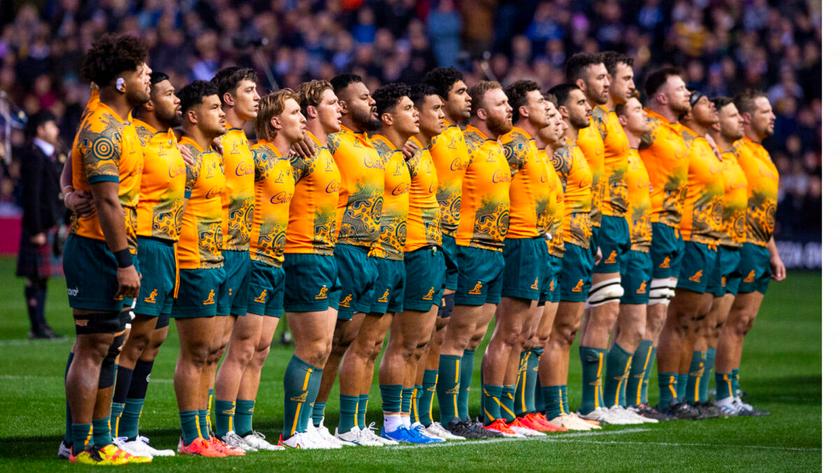
instantly eroding the Wallabies’ cohesion. The creation of the Melbourne Rebels in 2011 further expanded the provincial teams, distributing talent but dismantling the established cohesion developed overthreedecades.Thisdrasticshift sawAustralia,oncetheworld'smost cohesive team, plummet to eighth. During this period, the Wallabies endured17consecutiveGatlandCup losses,consistenthomedefeatsby
defeat against Wales, ultimately finishing third in Pool C. The disappointment was palpable, with Matt Williams describing it as the worst hit in Australian World Cup history.Despiteacknowledgingthe
current administration's efforts to address the issues, Williams expressed serious concerns about the team's future success, suggestingthatAustraliamightnot see a recovery until the 2031 World Cup in America. He drew parallels withahistoricalsetbackintheearly '70s when Australia's loss to Tonga sparkedarugbyrevivallastinguntil 2000.The2023WorldCup,therefore, has become a critical turning point, emphasising the challenges ahead forAustralianrugbyandtheneedfor strategic reforms to rebuild and regain competitiveness on the globalstage.
TheappointmentofJoeSchmidtas the new head coach for the Wallabies marks a promising development for Australian rugby. Renowned for his pivotal role in transforming Ireland into a formidableforceandcontributingto the improvement of the All Blacks under Ian Foster, Schmidt brings a wealthofexperienceandsuccessto the Australian team. Known for instilling discipline, implementing a sound structure, and maintaining consistency in selection, Schmidt is expected to provide the Wallabies with a much-needed strategic foundation.Hisemphasisonball
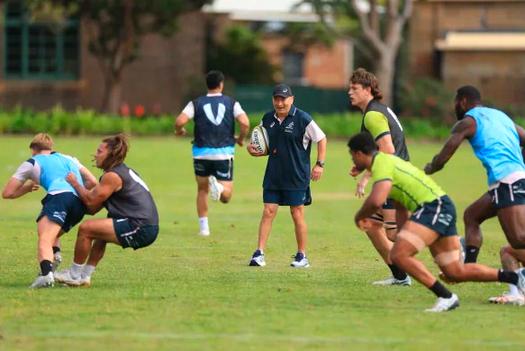
retention skills, catch-and-pass proficiency, and a well-structured game plan align with the areas where the Wallabies seek improvement. With Schmidt at the helm, there is optimism that his coaching ability will contribute to revitalising Australian rugby and steering the team towards success ontheinternationalstage.

The competitive advantage Australianrugbyoncehadofasmall professional player base that was more cohesive and centrally stable has been lost and has been compounded by a recent overseas player drain and a loss-making professional rugby model, suffocatingthecountry'scapacityto retain and develop talent. This recenthistoryofAustralianrugbyis acasestudyofasportingteamthat has risen and fallen through the influential factors of team cohesion as measured by TWI and best explains how the Wallabies went from being the best team in the world to now being in danger of dropping out of the top 10 rugbyplayingnations.

In the bustling halls of The King's School,whereacademicexcellenceis celebrated, there lies another world ofgrowthanddevelopmentbeyond theconfinesoftheclassroom:thecocurricularclubs.Unfortunately,some are either lost in the busy life of King’s or are just never properly introduced and welcomed. These clubs can play a crucial role in shaping well-rounded individuals by offering unique opportunities, journeys,andrelationships.
King’s is a school well known for an education not restricted to the classroom. A major strength of ours is precisely the variety of cocurricularopportunitiesonoffertoall students.Rangingfromweeklyclubs to Duke of Edinburgh expeditions, theseopportunitiesallhavesomuch potentialtobrightenandtemper
students individually and help strengthen group friendships. Not only do they provide profound knowledgeandconnections,butcocurricular clubs can also be a comforting place to go when you needjustthat.
ThisarticlewillhighlighttwoclubsI havepersonallybeeninvolvedinand found throughout my journey at King's. Both clubs have played a huge part in my journey at King’s and have given me opportunities thatIwouldtakeonagainandagain. Theyhaveplayedasignificantpartin mypersonalgrowthandinitiatedso many bonds with fellow Kingsmen. Bondsthathavehelpedmethrough times of need. So, with utmost passion and delight, I present to you the Agriculture Club and IndustrialTechClub.
The Ag Club stands as a testament to The King's School's commitment to providing a well-rounded education and continuing desire to fosteranappreciationforitsoriginal rootsinruralAustralia.Thatsaid,you absolutely do not have to be a country boy to enjoy Ag Club. Even thoughIamnotfrom'thecountry', the club has been so welcoming to me and for so many other boys of different experiences and backgrounds.
Nestled within the School's acres, thisclubopenstheexcitingworldof agriculturetoitsmembers.Students have the chance to get their hands dirty (quite literally) as they engage in activities ranging from planting crops and tending to livestock to practising theoretical knowledge and running machinery that isn’t oftenfoundinthecity.
Do you enjoy reality TV shows such as MasterChef and Shark Tank, where contestants present their hardworktobejudged?
One particular activity the Ag Club engages in is showing and working withcattle.Wehaveateamofboys that take cattle to nearby shows to compete.Thisteamdoeseverything fromwashingthemtoleadingthem and being judged themselves in variouscompetitions.Butit'snotjust about the animals. A lot of the judging is about how the boys presenttheanimalsandtheirability toleadthecattle.
Key dates on the calendar include a one-day show in Castle Hill and the final show of the cattle season for King’s at the Royal Easter Show, going for around a week. The boys compete at these shows — tending to the cattle, living together, and working long hours of the day to completevarioustasksthatareboth physically and mentally demanding. At the end of the day, however, the workisbothfunandrewarding.Boys get to learn how to work as a team and gain skills many others simply don't attain. These opportunities provide boys with growth and connection and benefit the


AnotherpartoftheSchool,theTech Club at King's, is a haven for those with a passion for innovation and design. In an era driven by technological advancement, this club empowers students to explore their creativity through woodworking, metalwork, engineering, and design and technology.Theclubprovidesasafe and fun place that caters to boys who just want to come, relax, be creative, and release stress through a hands-on project outside of the classroom. It is also a great fit for those who are more serious and want to learn more and hone their craft.Aboveall,studentsofanyskill levelorabilityarewelcome.
Tech Club members are not just rural boys making trailers for their major work. They are all boys from different backgrounds and distinct parts of the school. From conceptualising and prototyping to the final execution of projects, the club provides a platform for handson experience. This is a welcome change to the theory that often needs to be taught in a traditional classroom setting. In doing so, anyone can be nurtured and develop useful practical skills in today'stechnologicallandscape.
Now,youmightbewondering,why bother with these shenanigans whenyoucansticktothecomfortof your textbook fortress? Well, the need for co-curricular clubs like Ag Club and Tech Club lies in their abilitytocomplementtheacademic curriculum by offering a diverse rangeoflearningexperiences.These are great opportunities and help form lifetime bonds with others. Participation in co-curricular activities fosters a sense of belonging and camaraderie among students. Whether bonding over a shared interest in cultivating the land or collaborating on a tech project, these clubs create a supportivecommunitythatextends beyondjustouracademicpursuits.
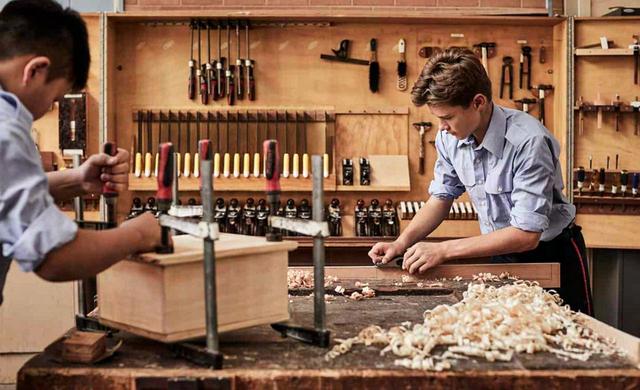
AsstudentsofTheKing'sSchool,the call to go beyond the classroom resonates loud and clear. The Ag Club and Tech Club embody this spirit,providingavenuesforpersonal and intellectual growth that extend far beyond conventional academic boundaries.WhilstIfocusedontwo clubs within this article, there are many other available opportunities for you to engage in, try, and hopefully find something you enjoy andbenefitfrom.
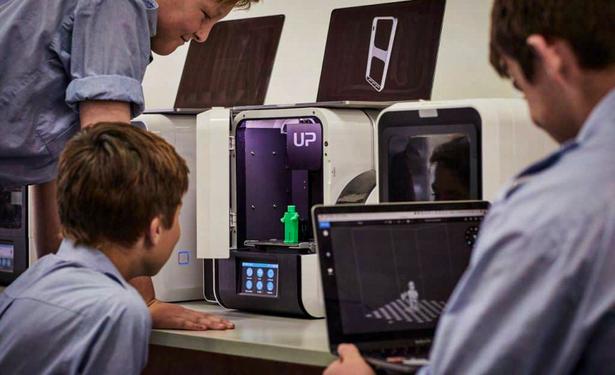
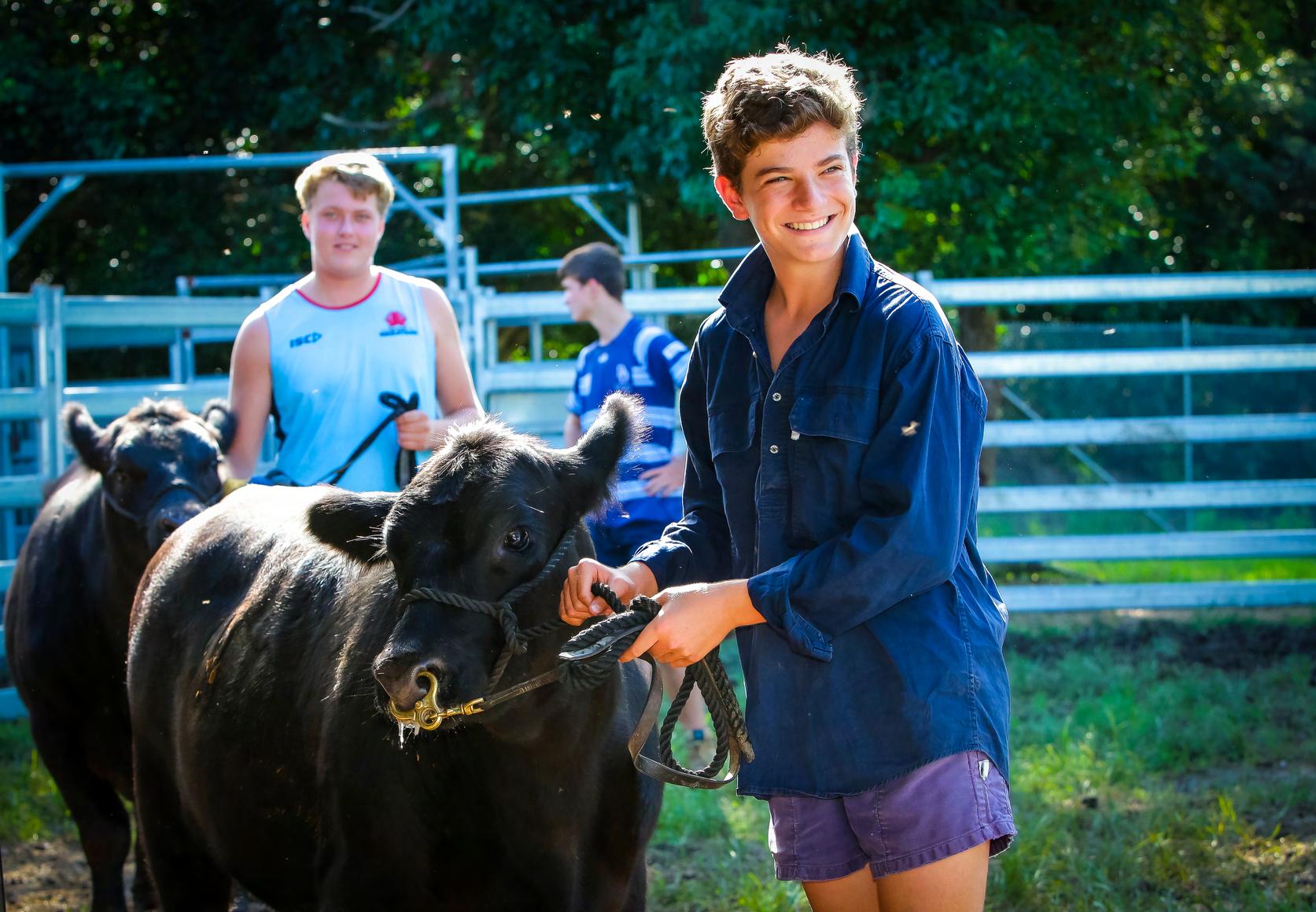
So, fellow students, as you navigate the corridors of The King's School, don'tjustconfineyourgrowthtothe boundariesoftextbooksandlectures. Embracetheopportunitiesweareso luckytohaveonoffertous,foritisin these co-curricular pursuits that you will discover an education that goes beyond the classroom, shaping individuals who are not only academically adept but also wellrounded, innovative, and ready to face the challenges of the future. Findyourpeople:thosewhoarelikeminded and help build each other up. On the other side of academic success, sometimes you need somethingfunandrelaxing.
Becauselet'sfaceit: life'stooshortto beallserious.
Sometimes, you just need to dig in the dirt for a good laugh and a greatstorytotell.
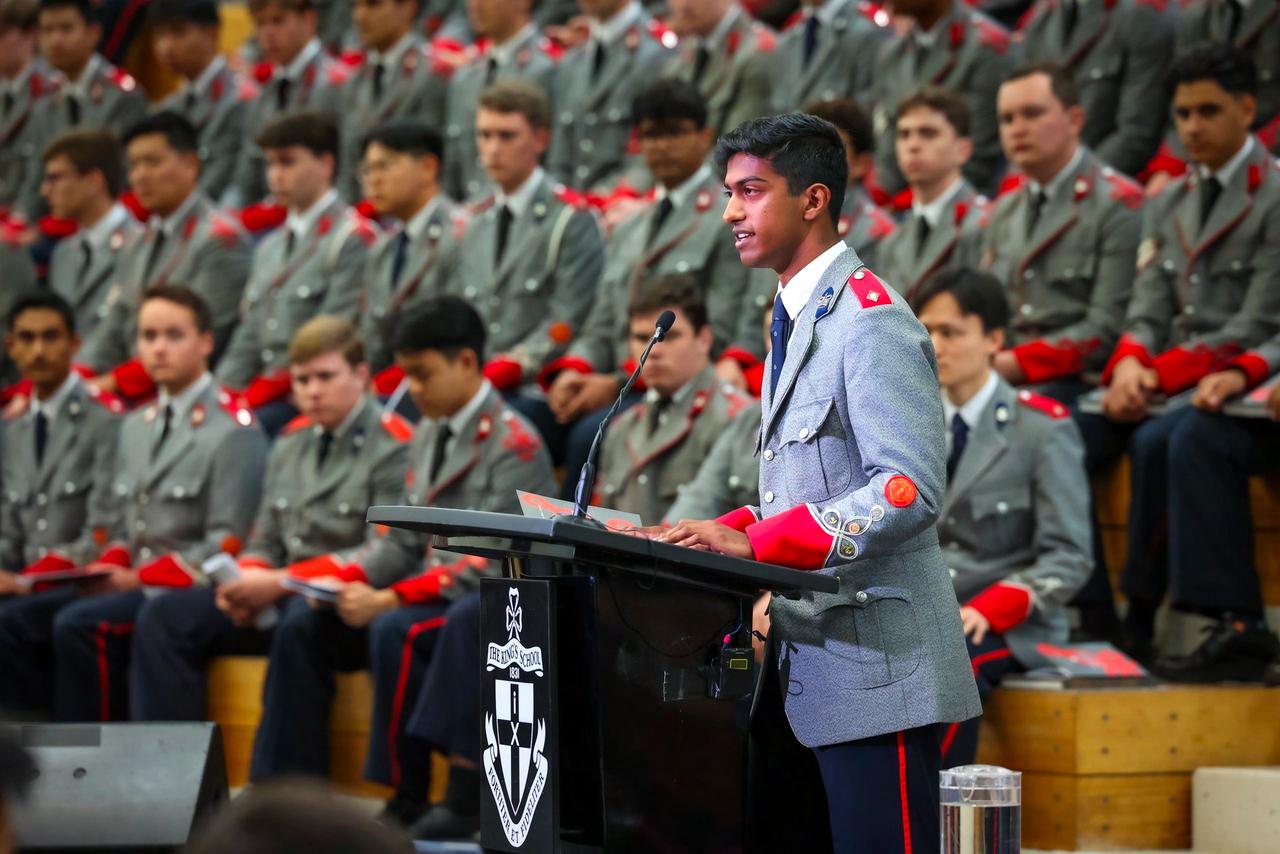
OntheexactdateofDecember14th
each year, around 70,000 students in NSW click on one of the most anticipated and nerve-wracking URLs of their lives, confronted with the 4-digit number that would ‘determinetherestoftheirlives’.
Some would have their arms in the air, celebrating their approaching admission into their dream course. Some would be the opposite, head in hand, regretting, lamenting, and bemoaning what might have happenediftheyhadstudiedjusta bitmoreduringthebreakinsteadof playing hours upon hours of OG Fortnitewiththeirfriends.
It is said that the HSC can make or break a student’s pathway into university and beyond, that it directly determines what course theywouldstudyand,consequently, whatcareertheypursueinthe
future. So, unsurprisingly, it is often labelledthe‘mostimportantexamof your schooling life’. Thus, many students spend countless days and nightsstudyingforeachoneoftheir courses,goingtotutoringcentresto refine their knowledge or getting advice from teachers, peers, and parentstoachievetheultimategoal oftheirdreamuniversity.
With the 2023 HSC results and rankings having been released on a veryfineThursdayinDecember,the King’sSchoolcelebratedits2‘firstin courses’, many state rankings and Chris Yoo’s perfect ATAR of 99.95 (whocould’veknown!).
It was incredible to witness the achievements of last year’s graduating Kingsmen. Other noteworthy mentions included St Joseph’sCollegetoppingmodern
history, all 5 out of 5 top ranks in Classical Greek Extension coming from Sydney Grammar, and maybe the most miraculous, James Ruse’s dynasty being dethroned by North SydneyBoysbyasignificantmargin of 9%. And I suppose you could arguethatwe–themeninSkyBlue and White – pulled off quite the heistwithourbestperformanceyet as26thinthestate.

But in the grand scheme, does any ofthismatter?Shouldwecelebrate the academic achievements of past cohorts? Of course, but I believe there are more things we should focus on because King’s is more than just an academic institution. We incur necessary sacrifices to produce ‘global thought leaders’ ratherthan‘brainsonsticks’.
King’sisaschoolthatstudentsdon’t go to just for a perfect ATAR; it is a school that opens many doors for eachandeverystudentthroughthe co-curricular sphere. Beyond pure scholarship, King’s offers countless clubs and opportunities that no other school offers in areas such as sports, music, chess, ag, and much more. A Term that you may have often heard King’s boys being described as is ‘busy’, and that is completely true. Studies show that people with fewer tasks or commitments in an environment entrenched and centred around academic competition (one similar to top selective schools) become increasingly overwhelmed and temporarily disengaged from society, falling into the pitfalls of procrastinationandmentalhealth
issues. American Author Zig Ziglar arguesthat“Lackofdirection,notlack oftime,istheproblem.Wealllivewith 24 hours in a day”. Therefore, we, as Kingsmen, get bombarded with activities, such as sports training and matchestoimproveourphysicaland mental health, leadership and communication opportunities in Corps,andthechancetolearnabout the Christian faith in Chapel and Cru Groups. Thus, Kingsmen are much more well-rounded going into university and into society than most otherstudentsfromotherinstitutions: a jack of all trades. Kingsmen stand outfromothersinthevaluesthatthe School instils from a very young age. We stand out in the way that we act aroundotherpeopleandthewaywe treatthem.Wealsostandoutforour ability to communicate with peers andourabilitytoleadothersinsucha way that everything is organised and everyone’s voices and opinions are heard.
Furthermore, once a student enters a university course, their ATAR is a thing of the past. The only things that will truly stay with them are their values, their well-rounded qualities, and their unique personality. We emphasise that “Your ATAR doesn’t define you”. Universities (once you get into the course,thatis)don’tcareaboutthis archaicnumber.Andevenlessso— societyabsolutelydoesn’tcarewhat mark you got for your Maths AT2. Let’s set up an example: two studentsareinthesamecommerce courseatUNSW,andoneofthemis a 99.95 ATAR student, topping the statein3subjects,andtheotherisa 95ATARstudentwhoknowshowto startconversationswithpeople,has leadership and communication skills, and shows the values that King’s upholds so much. Very soon, bothofthemwillbeoutofuniversity and into the real world, looking for jobs.Theyhavestudiedtheidentical courseandhavebarforbar,wordfor word,thesametheoryskills,so
howwillanemployerdecidewhoto selecttoworkfortheirbusiness? Forme,itisprettyevident.
Yet another advantage that King’s holdsovermostotherschoolsisits provision of international opportunities, whether that be in the US, UK, or Europe - which is largely due to, again, its emphasis on co-curricular activities, as international school systems are not based on academic merit but on“well-roundedholisticportfolios”. Overseas education provides a breadth of opportunities and experiences similar to those of King’s,whichwillfurtherdevelopus young men to have the skills and abilities to flourish in society, the workforce and our families in the future.
Thus,thefactthatKing’shasnever topped the state in HSC rankings may be a good thing. Why would wewanttoconfineourselveswithin the boundaries of academic excellenceandnothavetheability toventureoutsideintothedomains of sport, music, or cadets? Rather, King’s as a school develops young men who seek to make a positive impact on our society in many ways,whichiswherewedivertfrom top academic achievers, as we are multifaceted and equipped with many assets that will be extremely beneficial in the long run, prioritising long-term success over short-termachievement.
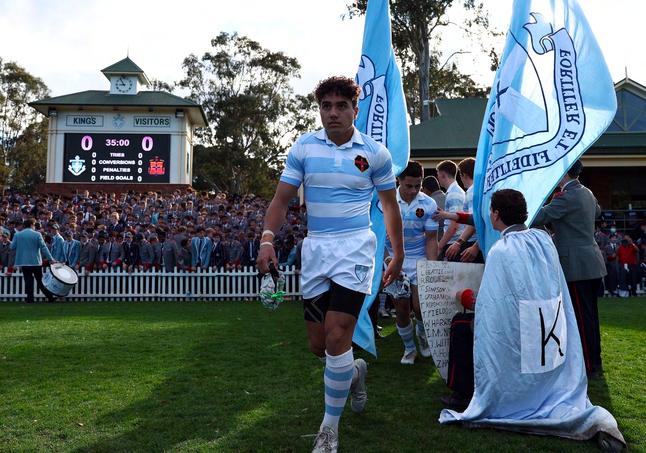
Term 1
16/3
AAGPS Head of the River
Whole School Attendance
22/3
GPS Swimming
BRI, KUR, MAQ + All boarders not on leave
Term 2
18/5 Cross Country Home Invitational
1/6
15/6
22/6
27/7
Optional attendance for those not playing
First Home Game v. SJC / SGS
Whole school attend both Rugby (v. SJC) and Football (v. SGS)
NC Home, SBHS Away Game
‘Support your Sport’. Rugby players support Rugby 1st XV (v. NC). Football players support football 1st XI (v. SBHS), etc.
Home Game v. TSC
All boys to support either Rugby, Football, or Volleyball
Home Game v. SHORE
All boys to support either Rugby, Football, or Volleyball
Term 3
3/8
SJC Away Game
Optional ‘Play and Stay’ for those at SJC + Support buses from school
10/8
Final Home Game v. SIC
Whole school attend both Rugby (v. SIC) and Football (v. SIC)
13/9
GPS Debating v. TSC
BUR, DAL, WIC + All boarders not on leave
21/9
AAGPS Athletics
Whole School Attendance
